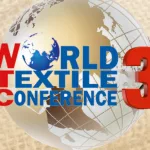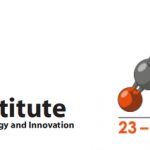
We quite often come across the term ‘Intellectual Property Right or IPR’ when reading some article about the liberal trade practices being followed by developing countries including China and India when it comes to protecting the rights of the IP holders. These articles written by foreign trade experts specifically warn technically advanced companies mostly in the US and the EU to take the necessary steps to protect their IPRs when considering doing business with countries like China, India and others. China has the presence of world’s most advanced companies in almost all the sectors where IPRs are supposed to be the key elements of the countless goods being made in factories located in China. For example, Apple’s iPhone to Nike’s apparel or footwear. This has also resulted in the maximum abuse of IPRs in China. There are people in China who can copy any design or product and sell you at a much cheaper rate.
Chinese workers perhaps represent the most value-added laborforce because of their exposure to the most modern technologies from around the world. Similarly Chinese businesses have precious exposure to the technology, work culture and business practices being followed by the best global companies. Some how, India has not been that fortunate to have the presence of a large number of world’s best businesses. But the positive side of this is that India is much more trusted globally than China. However, this is another topic of discussion which we leave for future.
In the textile and clothing sector, it is believed that the prime objective of companies to enforce IPRs is to attempt to maintain control over their innovations or creative outputs. There are various tools available to them under the formal IP rights, such as trademarks, copyrights, geographical indications, industrial designs, patents and utility models or the so-called “informal mechanisms” like “secrecy”, lead-time, and reputational deterrents.
It is recommended that the rights holders should register their IP rights with the local authorities to have stronger protection (and a proof of ownership which can be used in case of disputes with other firms). The registration helps even if some of the above-mentioned “formal” IP rights are recognized in some jurisdictions (including India) under common property law without any formal registration. Also, since IP rights grant exclusivity, they can help companies capture the value of their innovations in niche markets via reduced direct competition.
Not many textile and clothing firms in India have IP-intensive innovations to their credit. Even the brand building on their part is not sufficiently intensive. Trademarks play a crucial role in the branding efforts but there is not much awareness among most SMEs in the apparel sector about the trade name/brand name registration. They have to rely on handful of attorneys available for this field in absence of a robust on line process unlike in the US and other advanced countries where full transparency is practiced by providing the information in the real time.
When it comes to patents, the track record of India is very dismal in almost all the industries. It is perhaps unheard of in the textile and apparel sector. There is hardly any R&D activity taking place particularly in the textile and apparel sector that can result in patents of any commercial value. The country’s TRAs (Textile Research Associations) have become show pieces since a long time back having negligible connect with the industry for which they were created. They are still being run in the name of Centers of Excellence.
On page 96 of this issue, Monsanto’s legal battle for their Bt cotton is briefly given. The Delhi high court’s judgement provides a glimpse of the complex world of IPRs and their legal enforcement. It is certainly not to encourage the abandonment of R&D activities in the textile & apparel sector.
G.D. JASUJA
Managing Editor





